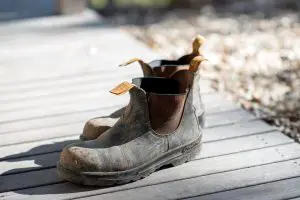Hiking in Tevas Sandals: Advantages and Disadvantages

Loved by outdoor lovers and fashionistas alike, the Teva sandal was first introduced to the world in 1984. Gaining steady popularity throughout the 1990s, the Teva sandal has once again gained favorability amongst the public as a practical yet fashionable shoe.
They’ve since added a hiking line to their offerings and hiking in Tevas has become a popular choice for many. So let’s get into the advantages, disadvantages, and find out if it’s really worth it.
Quick Links
Teva Sandals Functions & Features For Hiking
The Teva sandals have various functionalities, from being a fun part of your everyday casual wear to providing practicality and comfort during water activities and hiking. Once you get a pair of these comfortable, breathable sandals, they should last a very long time. As long as you’re not walking across fire or hacking at these shoes with an ax, your Teva sandals should last you virtually a lifetime.
One great little feature about these shoes is that they have the option to have a bit of a platform. So if you find yourself on the shorter side, a sturdy platform Teva sandal can help give you some extra height.
Depending on what you’re looking to spend, you can find an affordable pair of Teva sandals ranging from about $40-$50. If you’re looking to splurge on a pair with a bit more frills, Teva’s can reach up to about $150.
Are Tevas Good for Hiking?
Although comfortable, Teva sandals probably shouldn’t be your first choice for hiking shoes. When hiking, you’re already making yourself vulnerable to the elements, and with that comes a fundamental need to protect yourself. Just like your skin needs sunscreen to protect you from the heightened sun exposure, or your legs need long pants to protect you from a brush with a poison ivy plant, your feet and ankles also require a specific amount of protection.
Typically when you’re hiking, you’re going to want a shoe that provides you all-around protection and ankle support. This will either look like a standard hiking boot or a running sneaker.
Teva sandals do not provide adequate foot protection or ankle support, as it has your feet almost totally exposed, save for the straps that attach the shoe to you. Although it may seem that a Teva could be an ideal, comfortable hiking shoe, your likelihood of getting hurt on the trails with this shoe is actually much higher than if you were to opt for a more appropriate pair of shoes.
Oftentimes, sandals will have less traction on the soles than hiking boots, which doesn’t help you with some of the things you might come across on a trail, such as hiking on loose gravel or across wet rocks.
If you want to take a pair of Tevas with you on an outdoor adventure, you’d likely be more comfortable taking them out to the beach. In fact, they were initially made for rafting guides cruising up and down the rivers of the Grand Canyon.
Advantages of Hiking in Tevas Sandals
Although not perfectly ideal, there are some benefits to taking this shoe out on the trails with you. For one, the shoe is very lightweight and reasonably durable.
Hiking boots tend to have a reputation for being an especially fertile ground for blisters to appear. When you’re hiking in sandals, your skin will likely be far less exposed to any rubbing, lowering your chance of getting those pesky skin irritations.
You’d also likely experience a much cooler breeze over your feet than if you were to hike in boots that can sometimes feel like an oven, especially when you’re hiking in hotter weather. This can make it less likely to potentially contract hikers toenail or any other fungal infection that festers up when sweat and moisture are involved.
This makes hiking in sandals ideal for cooler weather, but not too cool. I know this probably doesn’t need to be said, but I’ll just say it anyway: If it’s freezing out or there’s a chance of a blizzard, sandals obviously won’t provide you with the adequate protection needed from the harsh elements and potentially even hypothermia. So definitely try and keep your hiking sandals saved for the warmer weather.
Teva may have better traction for hiking than the average sandal due to its initial design for water activities, but it is still a good idea to be very mindful of each step you take when doing more rigorous hiking activities such as climbing up rocks or hills.
How to Deal with Debris Getting in Your Tevas?
One of the common issues you’re going to face when hiking in Tevas, and really, any pair of sandals is the potential for debris, such as small pebbles or sticks, getting lodged inside of your shoe and becoming uncomfortable. To avoid this, you can try one of two things.
The first option is to simply stop and take a moment to empty out your sandal whenever you feel something inside of it. Simply stop and brush it out with your hand. This may seem like a pain, but it will save you from a lot of discomfort later on.
The second option is to tape over the top of your sandals. This will create a barrier between your foot and the outside world, keeping any debris from getting inside. If this sounds like it’ll suck, that’s because it probably will. You’ll lose the open-air feel of sandals and will likely be quite sweaty by the end of the day. But, if your goal is to keep debris out, then this is a perfectly viable option.
Lastly, if you hike in your Tevas often – you’ll eventually learn how to instinctively avoid the most common debris. Not saying it’ll never happen, but you’ll get pretty good at avoiding things that would’ve gotten in your way.
Other Hazards to Look out For While Hiking in Teva Sandals
Besides debris, there are a few other hazards you’ll want to be aware of when hiking in sandals. We’ll cover them below:
Falls and Sprains
Even with the best pair of hiking shoes, you’re always at a risk of taking a tumble or two when you’re out on the trails. To make it less likely that you injure yourself from a fall, get used to walking around in your sandals before you take them out on any major hikes. This will help you get a feel for how they grip the ground and how they react to different types of terrain.
When hiking in sandals, you’re also at a higher risk of spraining your ankle due to the lack of support around your ankles. To avoid this, try to hike on trails that are well-maintained and not too rocky or uneven. And as always, be sure to take things slowly at first until you get a feel for how your sandals will grip the ground.
Hot and Cold Temperatures
As we mentioned before, one of the main advantages of hiking in sandals is that they offer your feet a lot of ventilation. However, this can also be a disadvantage if you’re hiking in hot weather. Your feet will sweat more, which can lead to blisters or uncomfortable rubbing. In extreme heat, your sandals may also start to feel hot to the touch, making them quite uncomfortable to wear.
Conversely, if you’re hiking in cold weather, your feet are going to get cold much faster since they’re not as well insulated. To avoid this, you can try wearing a pair of socks over your sandals or carrying an extra pair of socks to put on when you take breaks. Some people also wear toe-socks with their Teva’s and love em’.
River crossings
Water can be way more powerful than some give it credit for. If you find yourself having to cross a river along a hike, it would be in your best interest to get a pair of shoes that are durable enough to make that journey with you successfully.
The Teva sandal could help you get across waters that have a less powerful current, but if you’re crossing a rushing river, you’re gonna want as much stability as you can get. Consider a waterproof hiking boot instead, if river crossings are going to be a part of your hiking experiences.
Wildlife
When you’re out in nature on your hike, be mindful that you’re still in somebody else’s home. Whether it’s bugs, venomous rattlesnakes, or just plain old twigs, thorns, and branches, you’re gonna need to protect yourself.
Teva makes a line of closed-toe sandals that could be more suitable for hikes where you’re expecting to run into wildlife. They’re not the most stylish, but they’ll get the job done and help keep you safe.
Foreign Object First Aid
If you still are keen to hike in an exposed sandal, there’s the last bit of information that is important to take with you on your hike. In the case that you get a foreign object stuck in your foot, here are the proper precautions to take according to Mayoclinic.
For smaller foreign objects such as a piece of glass, a splinter, or a thorn, you can typically remove them safely by yourself without the need for additional medical assistance.
Before treating it, make sure you’ve washed your hands well with soap and water. You can use a pair of tweezers or a small needle that has been sanitized with alcohol to assist in retrieving the object. You’ll only need the needle if the object is a bit more embedded into the skin, in that case, use the sanitized needle to gently break open the skin, then follow up with tweezers to remove the object.
Afterward, make sure to wash the affected area, and top it off with petroleum jelly, or an antibiotic ointment. Make sure to pack these in your first-aid kit, because these are things that you typically won’t find in one.
If the object is deep in your skin, or even penetrating the muscle, do not touch the object and promptly seek medical attention. The most you should do for yourself in this kind of situation would be to lightly bandage the wound, making sure it’s not compressing the object deeper into the skin.
Best Teva Sandals for Hiking

Teva Hurricane XLT 2
If you do choose to hike in a Teva sandal, your best choice is going to be the Teva Hurricane XLT 2. These shoes are lightweight at just 10 oz. per sandal, extremely comfortable, and durable. A pair of these shoes will run you about $70 and is one of the best sandals they make for hiking. Teva recommends using them for light hiking and water activities, but I know people who’ve used them and really pushed them to the limit on some pretty tough hikes.
The Final Verdict
So in conclusion, there are definitely better alternatives than Teva sandals for challenging hikes, but don’t let that discourage you from taking them on your outdoor adventures! Although not entirely suited for all types of hiking, Tevas are still excellent for light hiking and activities involving water such as rafting, rushing rapids, or just wading in shallow water.
Good decision-making can help you make the most out of your hike. Starting at the foundation with the right footwear is a great place to start, and with the right pair of Teva sandals, you’ll be on your way to enjoying all that nature has to offer!

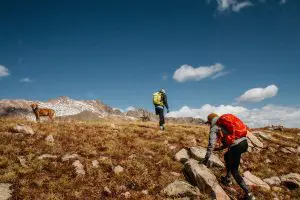
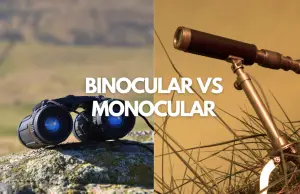
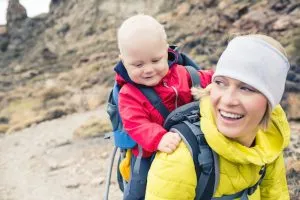
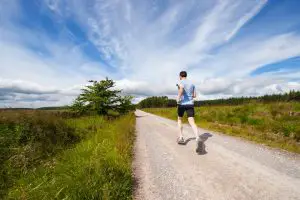
![33 Troubling Hiking Injury & Death Statistics [Important Trends]](https://hikersdaily.com/wp-content/uploads/2022/07/hiking-injuries-and-death-statistics-300x300.jpg)
